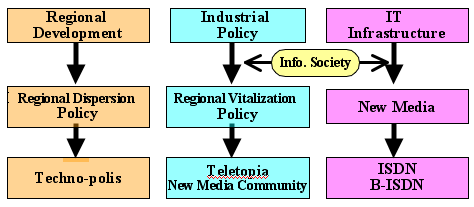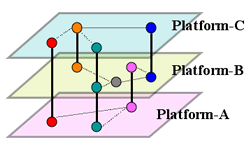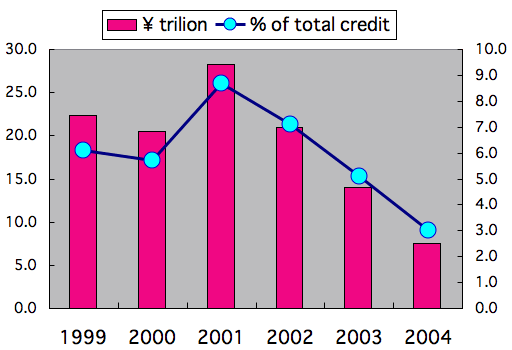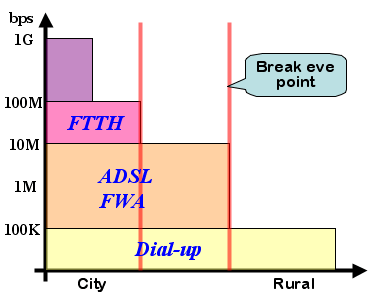 |
Perception and Designing of Regional Informatization |
Cat: ICT |
Hajime Maruta, Jiro Kokuryo, Shumpei Kumon, etc. |
06611u/18214r |
Title
Perception and designing of informatization of regions
地域情報化:認識と設計
Author
Hajime Maruta, Jiro Kokuryo, Shumpei Kumon, etc.
丸田一、國領二郎、公文俊平他
Published
2006
2006年
Index
Why?
- "Age of localism" or "Age of regionalism"
has been a slogan since 1970s in Japan.
- Dissemination of recent IT technology is bringing a new phase
to such movement: : independent and autonomous movement by the local
community.
- These activities have promoted to arise a new type of people who
are empowered by IT technology and IT knowledge: germ of netizens.
- A reading circle was held by the authors of this book at Glocom,
International Univ. of Japan in June 2006.
- 日本では「地方の時代」は1970年代からのスローガンであった。
- 最近のIT技術の普及はこれらの運動に新たな局面をもたらしつつある。コミュニティによる独立・自律的な運動である。
- これらの活動はIT技術やIT知識によってエンパワーされた新たなタイプの人々の登場を促した。エチズンの萌芽である。
- 本書の著者たちによる読書会が2006年6月に国際大学Glocomで開催された。
Tag
; Asymmetrical information; Connectors; Coviviality; Design science; Gate keeper; Glocal; ITCC; Imagined community; Layer of local community; Live one's lives; Movement from fringes; Principle of subsidiarity; Recollective imagination; Regional inforamatization policy; Social capital; u-Japan; ;
Summary
要約
>Top 0. Prologue:
- "Chiki (=Region)" is not only geographical
region, but also regional society or community where local people live their lives.
- Regional Sociology considers concept of 'region' comprises
element of 'area', 'common ties,' and 'social interaction.'
- Since Meiji Restoration (1868), the government has regarded
region or country as geographical fringe or remote rural areas,
which should subordinate to the central authority.
- In Japan it is conspicuous that 'high west and low east' in
various regional activities.
- Regionalism has two meanings: 'decentralization' and 'regional
sovereign power': the former means shift of power from central government
to local government, the latter includes local people, corporations,
and NPO in addition to local government.
- S. Kumon defines regional informatization in 3 aspects:
- Formation of platform; made by a language space composed of
vocabulary, grammar, syntax, and norm.
- Realization of image: established of identity of members.
- Regional development by IT: using of IT infrastructure &
application.
- >Top "Imagined Communities"
by Benedict Anderson, 1987:
says that 'Nation' or 'Nationality' is a concept which was made
as a process of modernization as "imagined political communities.
- "Recollective imagination":
it is fun to discover oneself; situation of 'conviviality'
by regenerated interdependence of human and tool.
- Cause of vitalization: (ITCC)
- Incentive: strong will for action
- Trust: mutual trust among subjects
- Connector: channel of connection in and out of the group
- Contrivance: Logistics, Group forming, Multi projects, Infrastructure
improvement
- Deterrence of surveilled society: analog mutual monitoring in
territorial society.
- >Top Social Capital: bunch of
trusts in a community; trust + norm + network.
- local climate; "soil and water", as infungible regionality
- Layer of local community:
-
Virtual space
IT layer
Artificial
Real space
Human layer
Linguistic
Ecology
Biological layer
Genetic law
Climate/Geography
Physical layer
Physical law
- >Top From 'Cognition science' (research of as-is) to 'Design
science' (research of to-be):
0.
プロローグ:
- 地域とは地理的な地域だけでなくそのに人々が生活を営む地域社会やコミュニティでもある。
- 地域社会学で言えば、地域の概念には、地域性 (area)、共同性 (common ties)および社会的相互作用を要素として含む。
- 明治維新以来、政府は地域や地方を地理的な周縁や遠方の田舎に対し、中央の権威に従属すべきと見なしていた。
- 日本ではさまざまな地域活動において「西高東低」が顕著である。
- 地域主義には2つの意味がある。地方分権化と地域主権化である。前者は中央政府から地方自治体への権限移行であり、後者は官ばかりか民
(住民、地域企業、NPO) を含む。
- 公文の地域情報化の定義は以下の3局面ある。
- プラットフォーム形成:語彙、文法、文脈、規範よりなる言語空間を形成するプロセス。
- イメージの実体化:成員のアイデンティティの確立
- 情報技術による地域振興:
通信インフラ整備やアプリケーションの活用
- 「想像の共同体」B. Anderson, 1987:
ネーションあるいはナショナリティは近代化の過程で「政治的共同体として想像された」概念であるとした。
- 「再想像」:自分自身を発見する楽しみ;人間と道具の相互依存の復活による「コンビビアリティ」
- 活性化の原因:イ・ト・コ・シ
- インセンティブ:行動への強い意志
- トラスト:主体間の信頼感
- コネクタ:グループ内外の提携チャネル
- 仕掛け:ロジスティックス、グループフォーミング、マルチプロジェクト、基盤整備タイプ
- 監視社会の抑止:地縁社会におけるアナログ的相互監視
- ソーシャルキャピタル: コミュニティにおける信頼の束;信頼+規範+ネットワーク
- 風土:代替不能な地域性としての土と水
- <左図>:地域社会のレイヤー
- 認識科学 (あるものの探究) から設計科学 (あるべきものの探究) へ
>Top 1. Policies of regional informatization in
Japan:
Gov. policy
Planned
Point
Use of IT
National total development plan
1962
- Development of underdeveloped area
National total development plan-II
1969
- Social development
- from point to line
- Telephony
- Data communication
National total development plan-III
1977
- solving digital divide
- sphere of settlement
- Expand of data, visual, and visual communication
National total development plan-IV
1987
- Multipolar development
- random access
- ISDN
- IT infrastructure
- "New media" boom in 1980:
- A. Toffler wrote 'Third wave' in 1980.
- NTT Public Corp. published INS (Information Network Service)
initiative, aiming to complete digital network in 1977.
- New media included Cable TV, Videotex (Captain).
- MITI's Technopolis concept (1980), then New Media Community
concept (1983)
- MPT's Teletopia concept (1983)
- >Top Regional informatization policy in Japan
(1980s):

- >Top "Principle of subsidiarity":
Complementary Principle
Solutions should be done locally, and those of upper social units
should be complementary.
1.
地域情報化政策:
- <左図> 全国総合開発計画とIT:
- 全国総合開発計画
(全総) 1962
- 新全国総合開発計画
(新全総) 1969
- 第三次全国総合開発計画
(三全総)1977
- 第四次全国総合開発計画
(四全総)1987
- ニューメディアブーム (1980s)
- トフラー著「第三の波」
- 電電公社はINS構想発表(1977)
- ニューメディアはCATV、ビデオテックス (CAPTAIN)
- 通産省:
テクノポリス構想 (1980)、
ニューメディア・コミュニティ構想 (1983)
- 郵政省:
テレトピア構想 (1983)
- <左図> 地域情報政策
1980年代に打ち出された政策
- 補完性の原理:
解決はローカルに行われるべきで、上位の社会単位の解決は補完的であるべき。
-
>Top History of regional informatization:
1st generation
(1985-94)
2nd generation
(1995-2004)
3rd generation
(2005- )
Technology
PC communication
Internet (mail, HP)
Internet (SNS), Broadcast
Background
rivalry with Tokyo
localism
regional identity
Collaboration
backed by governor
coop. with local gov/corp/univ.
coop. with local gov/corp/univ.
Activity
telecom infrastructure
platform, local issues
local media, GFN
Participants
mail, BBS, HP
participate to platform
watch/participate/make
Evaluation
evaluation from outside
evaluation from inside & outside
evaluation from inside & outside
Case
Oita, Kiryu, Gumma, Okayama
Toyama, Saga, Mitaka, Kagoshima
Kumamoto, Sado, regional SNS
>Top 2. Incentives for regional Informatization:
- Incentives of leaders: Social self-fulfilment as an individual.
In consequence such idea and action can change the community, contributing
regional informatization.
- First, obeying local p's and q's, then let them acknowledge
own p's and q's.
- A person who feels fringe or marginal function may become
a leader.
- >Top New movement usually occurs not from the center but fringes, not from smooth and flat, but uneven and rugged areas or gaps.
- <Right diagram>: Regional human network:
- each dot shows a person at a certain platform.
Each person has different human network in a different platform.
- >Top Connecting functions in or between platforms:
- Connection within a platform
- Connection between platforms
- Connection between different regional platforms:
- Gate keeper: a person who connects between boundaries.
- 'Tipping point': a sudden overflow of idea or trend crossing
the threshold.
- >Top Various type of connectors:
-
between
regional plat.
between
platforms
within
platform
Meta connector
○
Coordinator
○
○
○
Platform designer
○
○
Fixer
○
Manager
○
2.
地域情報化のインセンティブ:
- リーダのインセンティブ:まず個人としての社会的自己実現。その結果として想いや行動が地域を変え、地域情報化に寄与する。
- まずは地域の作法に従い、その後自らの作法を認めさせる。
- 周縁性や周縁的な役割であることをを感じている人がリーダになり得る。
- 新しい動きは中心からではなく周縁から、均質で平坦な所ではなく、不均質で起伏や隙間から始まる。
- 地域における人のつながり

- 点は、あるプラッフォームにおける個人を示す。各人は別のプラットフォームでは異なる人脈を形成する。
- コネクタのタイプ:
- メタ・コネクタ
- コーディネータ
- プラットフォーム・デザイナ
- 顔役 (フィクサー)
- マネージャ
>Top 3. Regional finance:
- Financial structure in Japan: mostly indirect finance; borrowers
borrow funds through indirect means such as banks.
- Japanese financial asset of all households: total $14 trillion
mostly in back deposit (54%), while Japanese corp. borrows mostly
from bank (39%)
- Financial asset of household (US/JP/DE):

- Financial debt of corporation (except financial
organization):

- >Top Recovery of Japanese economy: since 2002
- Causes: export to US/China, Digital boom
- Stock market (Nikkei): \7,607 in spring 2003, now around \15,000
in autumn 2005.
- <Right chart> Decrease of bad loans:
became 1/3 from the peak in 2001in most city banks
- total amount of bad loans of city banks in Japan (\ trillion
- left), ratio to the total credit amount (% - right)
- But regional banks are slow recovery, due to the function of
'relational bank'
- long-term relationship with local corporations.
- Various new regional finance:
- NPO bank: Finance to NPO and workers collective like Coop
- Community fund: Investment by local people
- Community bond: local government public bond
- Community credit: mutual aid finance among local corporations
(mujin)
- Local money: locally issued
- Recent trend of regional finance:
- >Top Financing is not only to mediate finance, but also to produce
information. That is, either indirect or direct financing, it
is important to remove obstacles caused by lack of information
such that lenders know little about borrowers (=asymmetrical information),
rather than to adjust the amount or period of the finance.
- Information itself could be a key to form network or platform
in the process of regional informatization.
- To earn trust from outside, it is urged sustained efforts in
disclosing information of daily PR of the activities as well as
account and finance.
3.
地域金融:
- 日本の金融構造:
間接金融中心
- 日本の家計の金融資産:
計1,400兆円、内、預貯金54%
- <左図>
- 米・日・独の家計金融資産構成:
- 米・日・独の非金融法人企業負債構成:
- 日本の企業は銀行借入が39%
- 安定さを取り戻した金融システム:
- 2002を底に日本経済回復基調
- 原因:
米国・中国向け輸出増加、デジタルブームなど
- 株価(日経平均)
¥7,606 (2002春)
→¥15,000台(2005秋)
- 不良債権減少:

- 2001年ピーク時の1/3 (大手行)
- 下図:公表不良債権残高 (兆円、左軸)
右軸:対総与信比率 (%)
- 但し、地域銀行 (地銀、第二地銀)では回復が緩やか
- リレーションシップバンク機能:地域企業との長期的関係維持
- 新たな地域金融:
- NPOバンク:
NPO法人への融資
- コミュニティ・ファンド
地域住民の出資
- コミュニティ・ボンド
町市民公募債
- コミュニティ・クレジット
地元企業間無尽
- 地域通貨:
- 最近の地域金融の傾向:
- 金融とは単に資金集中することではなく、その本質は情報を生産することである。即ち、間接金融にせよ直接金融にせよ、資金の貸し手と借り手の間の金額や期間を調整するだけでなく、貸し手が借り手のことを知らない
(=情報の非対称)から来る障害をいかに取り除くかが重要になる。
- 情報そのものがネットワークやプラットフォーム形成の鍵になる。
- 外部のトラスト獲得のためには経理や財務情報のみならず日常活動のPR情報の不断の開示努力が求められる。
>Top 4. The latest e-Japan or u-Japan:
- Japanese government adopted e-Japan initiative starting 2001,
aiming one of world top leaders in ICT nation.
- 30M ADSL and 10M FTTH in household users by 2005. This target
was achieved in 2003.
- From 2005, the government published u-Japan (ubiquitous-Japan) as the next step of e-Japan.
- IT infrastructure in japan:

- Problems & issues:
- Broadband service is not regarded as a universal service.
- meaning of broadband in Information society.
- who should promote broadband as a universal service? NTT,
government, or community, or bid with subsidy?
- Digital divide could not be solved by commercial services.
- MPM's recommendation report says "broadband zero area movement
by 2010."
4.
e-Japan/u-Japanの現状:
- 日本政府は、2001年にe-Japan計画を採択。世界トップクラスのICT国家を目指す。
- 2005年までにADSLを30百万世帯、光ファイバを10百万世帯に普及。この目標は2003年に達成。
- 2005年からは引き続き次の計画であるu-Japan構想を発表
- <左図> 日本の通信インフラ整備状況:
- 問題点と課題:
- ブロードバンドはユニバーサルサービスとみなされていない。
- 情報社会におけるブロードバンドの意味
- 誰がこのユニバーサルサービスとしてのブロードバンドを推進するのか?NTT、政府、地域コミュニティ、補助金付入札
- デジタルデバイドは商用サービスでは解消できない。
- 総務省報告では「2010年までのブロードバンド・ゼロ目標」を答申
Comment
- >Top Oxymoron: "Glocal" (Global
+ Local)
- Aufheben of Global and Local viewpoint, probably means that local
approach is important having global viewpoint.
- Once it is said 'City air makes people free,' but now
it could be rewritten 'regional air makes people free and active.'
- "Glocal": GlobalとLocalの視点
- Globalな視点を持ちつつLocalにアプローチする(着眼大局着手小局)
- かつて「都市の空気は人々を自由にする」と言われたが、今や「地域の空気は人々を自由にかつ活動的にする」と言い換えが必要かも知れない。
Title |
Perception and designing of informatization of regions |
地域情報化:認識と設計 |
|---|---|---|
Author |
Hajime Maruta, Jiro Kokuryo, Shumpei Kumon, etc. | 丸田一、國領二郎、公文俊平他 |
Published |
2006 |
2006年 |
Index |
||
Why? |
|
|
Tag |
; Asymmetrical information; Connectors; Coviviality; Design science; Gate keeper; Glocal; ITCC; Imagined community; Layer of local community; Live one's lives; Movement from fringes; Principle of subsidiarity; Recollective imagination; Regional inforamatization policy; Social capital; u-Japan; ; |
|
Summary |
要約 |
||||||||||||
>Top 0. Prologue:
|
0. プロローグ:
|
>Top 1. Policies of regional informatization in Japan:
|
1. 地域情報化政策:
|
|
>Top 2. Incentives for regional Informatization:
|
2. 地域情報化のインセンティブ:
|
>Top 3. Regional finance:
|
3. 地域金融:
|
>Top 4. The latest e-Japan or u-Japan:
|
4. e-Japan/u-Japanの現状:
|
Comment |
|
|